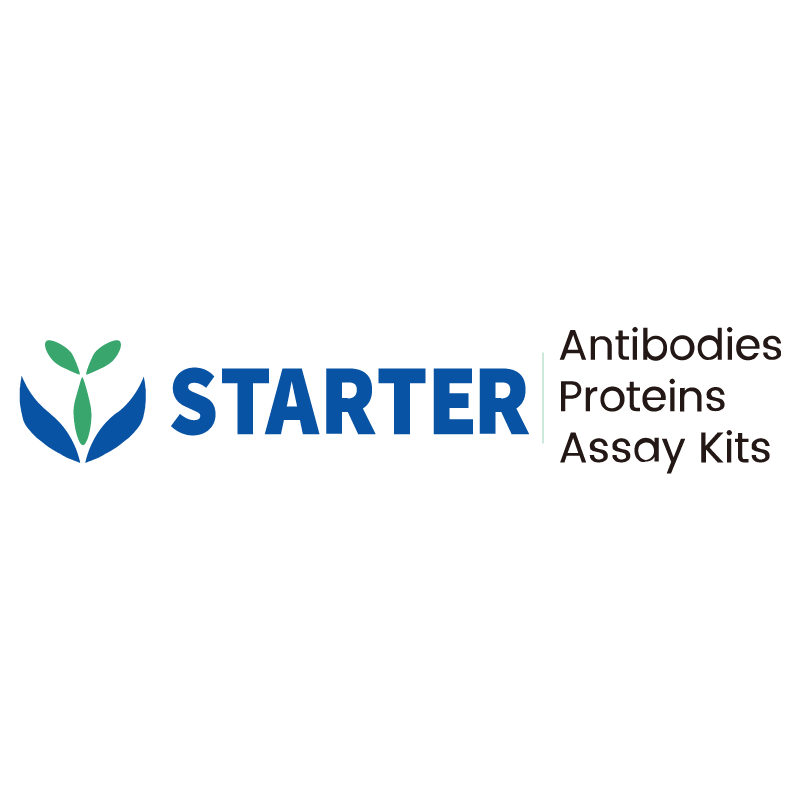Flow cytometric analysis of Human peripheral blood mononuclear cells (PBMC) labeling CD163 with purified antibody at 1/50 dilution (1 μg) (Right) compared with a Rabbit monoclonal IgG isotype control (Left). Goat Anti-Rabbit IgG Alexa Fluor® 488 was used as the secondary antibody.
Cells were surface stained with CD14-Alexa Fluor® 647, then stained with rabbit IgG (Left) / anti-CD163 (Right) separately. Gated on total viable cells.
Product Details
Product Details
Product Specification
| Host | Rabbit |
| Antigen | CD163 |
| Synonyms | M130, Hemoglobin scavenger receptor |
| Immunogen | Synthetic Peptide |
| Location | Secreted, Cell membrane |
| Accession | Q86VB7 |
| Clone Number | SDT-222-171 |
| Antibody Type | Recombinant mAb |
| Isotype | IgG |
| Application | IHC-P, FCM, IF |
| Reactivity | Hu |
| Predicted Reactivity | Pr |
| Purification | Protein A |
| Concentration | 0.5 mg/ml |
| Conjugation | Unconjugated |
| Physical Appearance | Liquid |
| Storage Buffer | PBS, 40% Glycerol, 0.05%BSA, 0.03% Proclin 300 |
| Stability & Storage | 12 months from date of receipt / reconstitution, -20 °C as supplied |
Dilution
| application | dilution | species |
| IHC | 1:500 | |
| IF | 1:200 | |
| FCM | 1:50 |
Background
CD163 is a monocyte/macrophage specific marker expressed predominantly on cells which possess strong anti-inflammatory potential. The expression of CD163 is strongly induced by anti-inflammatory mediators such as glucocorticoids and interleukin-10, while being inhibited by pro-inflammatory mediators such as interferon-gamma. CD163-expressing mononuclear phagocytes, as well as soluble CD163, may both take part in downregulating an inflammatory response [PubMed: 22038213].
Picture
Picture
FC
Immunohistochemistry
IHC shows positive staining in paraffin-embedded human liver. Anti-CD163 antibody was used at 1/500 dilution, followed by a HRP Polymer for Mouse & Rabbit IgG (ready to use). Counterstained with hematoxylin. Heat mediated antigen retrieval with Tris/EDTA buffer pH9.0 was performed before commencing with IHC staining protocol.
IHC shows positive staining in paraffin-embedded human spleen. Anti-CD163 antibody was used at 1/500 dilution, followed by a HRP Polymer for Mouse & Rabbit IgG (ready to use). Counterstained with hematoxylin. Heat mediated antigen retrieval with Tris/EDTA buffer pH9.0 was performed before commencing with IHC staining protocol.
IHC shows positive staining in paraffin-embedded human tonsil. Anti-CD163 antibody was used at 1/500 dilution, followed by a HRP Polymer for Mouse & Rabbit IgG (ready to use). Counterstained with hematoxylin. Heat mediated antigen retrieval with Tris/EDTA buffer pH9.0 was performed before commencing with IHC staining protocol.
IHC shows positive staining in paraffin-embedded human Hodgkin’s lymphoma. Anti-CD163 antibody was used at 1/500 dilution, followed by a HRP Polymer for Mouse & Rabbit IgG (ready to use). Counterstained with hematoxylin. Heat mediated antigen retrieval with Tris/EDTA buffer pH9.0 was performed before commencing with IHC staining protocol.
IHC shows positive staining in paraffin-embedded human diffuse large B-cell lymphoma. Anti-CD163 antibody was used at 1/500 dilution, followed by a HRP Polymer for Mouse & Rabbit IgG (ready to use). Counterstained with hematoxylin. Heat mediated antigen retrieval with Tris/EDTA buffer pH9.0 was performed before commencing with IHC staining protocol.
IHC shows positive staining in paraffin-embedded human lung squamous cell carcinoma. Anti-CD163 antibody was used at 1/500 dilution, followed by a HRP Polymer for Mouse & Rabbit IgG (ready to use). Counterstained with hematoxylin. Heat mediated antigen retrieval with Tris/EDTA buffer pH9.0 was performed before commencing with IHC staining protocol.
Immunofluorescence
IF shows positive staining in paraffin-embedded human liver. Anti-CD163 antibody was used at 1/200 dilution (Green) and incubated overnight at 4°C. Goat polyclonal Antibody to Rabbit IgG - H&L (Alexa Fluor® 488) was used as secondary antibody at 1/1000 dilution. Counterstained with DAPI (Blue). Heat mediated antigen retrieval with Tris/EDTA buffer pH9.0 was performed before commencing with IF staining protocol.


